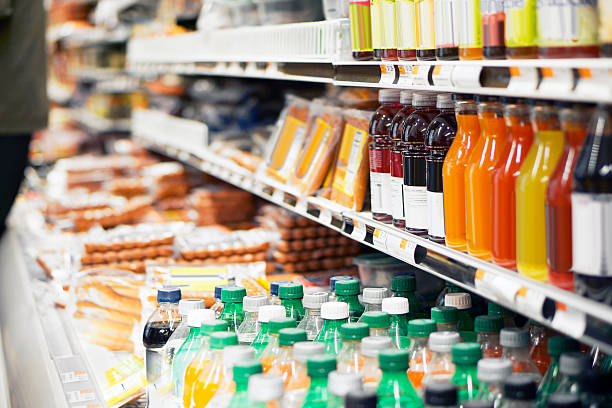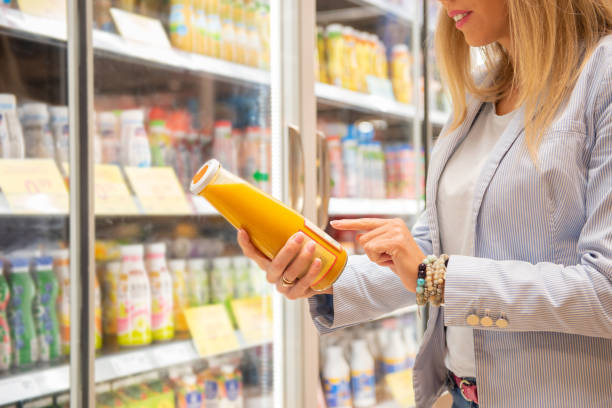Beverage packaging has more at stake than just keeping products fresh and appealing at first glance.
Today’s consumers are seeking an actual connection to the products they buy.
In a smarter world, you can crack open a refreshing drink or rip into a new snack or dessert, all while honoring the planet with the packaging choices you buy. With countless options battling for consumer attention, packaging has to capture the eye and resonate with eco-friendliness and personalization. Plastic, glass, bioplastics—they’re all a major part of the consumer experience.

Market at a Glance
According to data from Fortune Business Insights, this is how the beverage packaging market is sitting right now:
- The global beverage packaging market was valued at USD 144.40 billion in 2023 and is projected to reach USD 217.54 billion by 2032, growing at a CAGR of 4.70% from 2024 to 2032.
- Plastic holds the largest market share thanks to its high strength, stability, and leakage protection.
- Bioplastics are anticipated to motivate growth.
- The non-alcoholic beverages sector is leading, driven by rising consumer preference for healthy drinks post-pandemic.
- Ready-to-drink options are more popular than ever.
- Strict regulations against non-recyclable materials and rising material costs may restrict market growth.
- Sustainable packaging has increased from government focus on recycling and reusing to combat environmental concerns.
3 Eco-Packaging Innovations Right Now
New-Wave Plastic
Consumers are becoming more conscious of the environmental impact of single-use plastic beverage packaging, and it’s causing changing preferences in the market.
A recent study found that 61% of millennials are willing to pay more for eco-friendly products and are expected to make up 46% of the beverage market by 2026. Also, 53% of US consumers support environmentally friendly options.
Despite plastic accounting for 45% of beverage packaging, it maintains its largest market share status; only 25% is recycled in the US. This is driving manufacturers to seek alternatives from beverage manufacturing consultants seasoned in quality control and leading market trends. Many are now focusing on reducing plastic use and increasing recycled materials, with 89% to incorporate more recycled content.

Fiber-Based Over Glass
While glass bottles are viewed as “extremely eco-friendly” by 51% of consumers, their market presence is still limited, suggesting opportunities for growth as companies pursue better sustainability practices. But what if there was a new, more sustainable option?
Fiber-based bottles are an exciting new option created through a partnership between RyPax and CelluComp. Made from eco-friendly materials such as bagasse and bamboo, these bottles use CelluComp’s special ingredient, Curran, which makes them strong and gives them a sleek finish. They offer a sustainable alternative to traditional glass packaging, catering to premium markets.
Unlike glass, which can be heavy and breakable, fiber bottles are lightweight, completely recyclable, and biodegradable. They feature a special coating called Reef on the inside, which keeps the contents safe while still being eco-friendly. This way, Virginia manufacturers can meet their packaging needs without sacrificing sustainability.
Initial tests show that fiber-based bottles may face challenges with carbonated drinks, but this innovation marks an important move towards reducing plastic waste.

rPET Bottles Go Mainstream
rPET, short for recycled polyethylene terephthalate, is becoming a key player in beverage packaging, offering a greener option than new PET plastic. You might find regular PET in everyday items, like water bottles.
The beverage manufacturing process of turning used plastics into rPET involves grinding them down and melting them into small pellets, which can be remolded into the bottle. rPET can handle temperatures up to 70℃ and shares many traits with virgin PET, making it a practical solution to help tackle waste issues. Versatile rPET is even used in textiles, spun into fibers for clothing.

How To Improve Beverage Packaging
Versatile Processing Equipment
Virginia manufacturers should invest in flexible processing and filling machines. That can easily adjust to different product types and changing conditions, such as viscosity, acidity, and filling temperatures. Industry interviews reveal that 56% of manufacturers intend to add more processing machines, while 44% want to upgrade their filling equipment.
Sterilization Innovations
Incorporating more aseptic filling equipment can boost product safety and shelf life. Although hot filling is still widely used. Virginia manufacturers are beginning to adopt aseptic technologies to keep up with changing consumer needs and product standards.
Smart Automation
MIT Technology Review reports show that 72% of manufacturers want automated, data-driven solutions. Investing in smart technology can simplify operations. This involves automating tasks like changeovers, inspections, and data collection to keep up with rising demand and better manage product lines.
OEM Partnerships
Virginia manufacturers should team up with original equipment manufacturers (OEMs) that really get the beverage manufacturing process. Collaborating with OEMs that provide complete solutions, hands-on training, and personalized support helps manufacturers handle industry changes.
Continuous Training and Support
Giving thorough training to both new hires and current staff helps everyone keep up with the fast-paced tech changes in beverage packaging. Companies that team up with equipment Virginia manufacturers can ready their employees to handle modern machinery with confidence.
Want more from GENEDGE advanced manufacturing consulting? Reach out for a free assessment of your current beverage packaging model.

